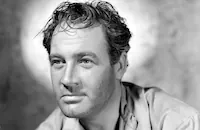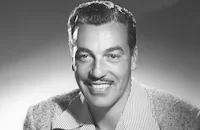The Little Princess

Brief Synopsis
Cast & Crew
Walter Lang
Shirley Temple
Richard Greene
Anita Louise
Ian Hunter
Cesar Romero
Film Details
Technical Specs

Synopsis
When Captain Crewe is called to service during the Boer War, he enrolls his little daughter Sara in a boarding school run by the heartless Amanda Minchin. Sara, a generous, unspoiled child, is dubbed "The Little Princess" by her schoolmates because of her distinguished family. At the school, Sara is befriended by Amanda's jolly brother Bertie; her riding teacher, Geoffrey Hamilton; her tutor, Rose, who is in love with Geoffrey; Becky, the little skullery maid, and Ram Dass, the servant of Lord Wickham who lives across the way. On the day of Sara's birthday party, Miss Minchin receives word that Captain Crewe has been reported killed in action and all his assets confiscated by the enemy. To pay for Sara's expenses, Miss Minchin sells the girl's clothes and makes her a kitchen servant, sending her to live in the attic. After losing her father, Sara also loses her friends when Geoffrey goes off to war, Rose is fired by Miss Minchin when she learns of her love affair, and Bertie leaves because he can no longer tolerate his sister's cruelty. However, Sara's spirit remains undaunted, and she refuses to believe that her father is really dead. After each debarkation of wounded men, she rushes to the hospital to find him, missing him several times as he lies in bed, shell-shocked. Finally, on the day that Captain Crewe is to be shipped to Edinburgh, Sara runs to the hospital where Queen Victoria is visiting. The queen intervenes on behalf of the little waif, and with her help, Sara is at last reunited with her beloved father.

Director

Walter Lang
Cast

Shirley Temple

Richard Greene

Anita Louise

Ian Hunter

Cesar Romero

Arthur Treacher

Mary Nash

Sybil Jason

Miles Mander
Marcia Mae Jones
Beryl Mercer
Deidre Gale
Ira Stevens

E. E. Clive

Eily Malyon
Clyde Cook
Keith Kenneth
Will Stanton
Harry Allen

Holmes Herbert
Guy Bellis
Evan Thomas
Kenneth Hunter
Lionel Braham
Les Sketchley
Robert Cory
Herbert Evans
Vesey O'davoren
David Thursby
Eric Lonsdale
Bob Stevenson
John Burton
Hilda Plowright
Clare Verdera
Joan Manners
Lilyan Irene
Eve Conrad
Frank Baker
Rita Page

Charles Irwin
Morton Lowry
Patrick X. Kerry
Jenifer Downing
Ann Howard
Cecil Watson
Connie Leon
Sidney Bracy
Olaf Hytten
Gerald Rogers
Crew
Ernest Belcher
Gene Bryant
Walter Bullock
Nicholas Castle
Richard Day
Walter Ferris
Roger Heman
Bernard Herzbrun
Ethel Hill
Natalie Kalmus
Thomas Little
Louis Loeffler
Gene Markey
Arthur Miller
Morgan Padelford
Hans Peters
Samuel Pokrass
Geneva Sawyer
Louis Silvers
William Skall
Gwen Wakeling
E. Clayton Ward
Darryl F. Zanuck

Photo Collections
Videos
Movie Clip




Trailer
Film Details
Technical Specs

Articles
The Little Princess
Based on the Victorian-era novel by Frances Hodgson Burnett, The Little Princess is the story of pampered Sara Crewe, whose widowed father leaves her in a luxurious boarding school while he goes off to fight the Boer War. When he's reported missing, and the money stops flowing in, the cruel headmistress banishes the girl into a garret and turns her into a servant. 20th Century Fox spared no expense on The Little Princess, which was Temple's first Technicolor film, and boasted a strong supporting cast that was perhaps a bit too talented for Shirley's liking.
Playing a cockney maid who becomes Sara's friend was a charming scene-stealer named Sybil Jason. A South African girl a year younger than Temple, Jason had appeared in British films and had been brought to the U.S. by Warner Brothers as a potential rival for Temple. Observing the crew's delighted reaction to Jason's cockney accent when the two girls filmed a scene together, the normally confident Temple felt pangs of jealousy. She recalled that she took out her feelings on another actress, Marcia Mae Jones, who played a schoolgirl who snubs Sara. In a scene where Sara dumps coal ashes on her rival, Temple did so a bit too enthusiastically, then asked director Walter Lang if she could do it again. Lang demurred, and as a repentant Temple shared her treats with Jones, she was disconcerted to learn that Jones envied her because she seemed so happy all the time.
Temple had never had any difficulty crying for a scene, and she had a particularly difficult one coming up, in which she had to make an entrance crying violently. Thinking about Jones' comment as she prepared for her entrance, Temple found she couldn't cry at all. She recalled someone's suggestion that the way to do so was to laugh and cry at the same time, and managed to work herself up into a hysterical fit, which she couldn't stop once the scene was over. Temple's mother had to take her into her dressing room to calm her down.
During the making of The Little Princess, Temple also remembered becoming more aware of pettiness by adults. James Roosevelt, the son of President Franklin D. Roosevelt, visited the set with his wife. When co-star Arthur Treacher made a lighthearted remark that Shirley could be president if she set her mind to it, Temple found the remark insulting to the president, and resented it. And there were other things that bothered her during production; a pet monkey on the set bit her. Temple's own pony, which the studio had hired for a scene, performed badly. All these incidents, while trivial, were humiliating for Temple. Childish self-confidence was being replaced by adolescent self-consciousness, and the sunny little girl adored by millions would soon disappear forever.
The Little Princess was a success; as it turned out, the movie would be Shirley Temple's last successful feature as a child star. The Blue Bird, a very expensive and much-anticipated fantasy adventure made the following year (1940), proved to be a box office bomb. Although Temple continued to make films until 1949, she never equaled the success she enjoyed as a child star. She retired from the screen, and later had a successful career as a politician and diplomat.
Director: Walter Lang
Producer: Darryl F. Zanuck
Screenplay: Ethel Hill, Walter Ferris, based on the novel by Frances Hodgson Burnett
Editor: Louis Loeffler
Cinematography: Arthur Miller, William Skall
Art Direction: Bernard Herzbrun, Hans Peters
Music: Walter Bullock, Samuel Pokrass
Cast: Shirley Temple (Sara Crewe), Richard Greene (Geoffrey Hamilton), Anita Louise (Rose), Ian Hunter (Captain Crewe), Cesar Romero (Ram Dass), Arthur Treacher (Bertie Minchin), Mary Nash (Amanda Minchin), Sybil Jason (Becky), Marcia Mae Jones (Lavinia).
C-93m.
by Margarita Landazuri

The Little Princess
Quotes
Trivia
Notes
The working title of this film was Little Princess. Frances Hodgson Burnett adapted her short novel Sara Crewe for the stage under the title A Little Princess. The play ran in London and New York from 1902-1903 and, according to modern sources, was so successful that Scribner's, Burnett's publisher, asked her to expand her original novel, using scenes from the play. That novel was also titled A Little Princess and was published in New York in 1905. According to a news item in Daily Variety, in 1934, Fox started negotiations with Paramount to purchase the rights to The Little Princess, the 1917 Artcraft film that was also based on the Burnett novel, starring Mary Pickford and directed by Marshall Neilan (see AFI Catalog of Feature Films, 1911-20; F1.2551). The Daily Variety item states that Fox wanted the story as a vehicle for Shirley Temple. According to the Twentieth Century-Fox Produced Scripts Collection at the UCLA Theater Arts Library, the first treatment of the screenplay entitled "A Little Princess" was written by Julien Josephson and Walter Ferris. A second revised treatment was then written by Julien Josephson and Philip Dunne. These treatments were then discarded in favor of an original story and treatment by Rian James entitled Little Princess. This was discarded for a new treatment entitled The Little Princess, written by Ferris and Ethel Hill, the writers credited with the final screenplay. According to records of story conferences contained in the Fox files, Darryl F. Zanuck suggested Arleen Whelan for the role of "Miss Rose" and Reggie Gardiner for the role of "Bertie". Another news item in Hollywood Reporter notes that a special trailer was made for this film using new high-speed Technicolor stock that was also utilized in the filming of Gone with the Wind.















